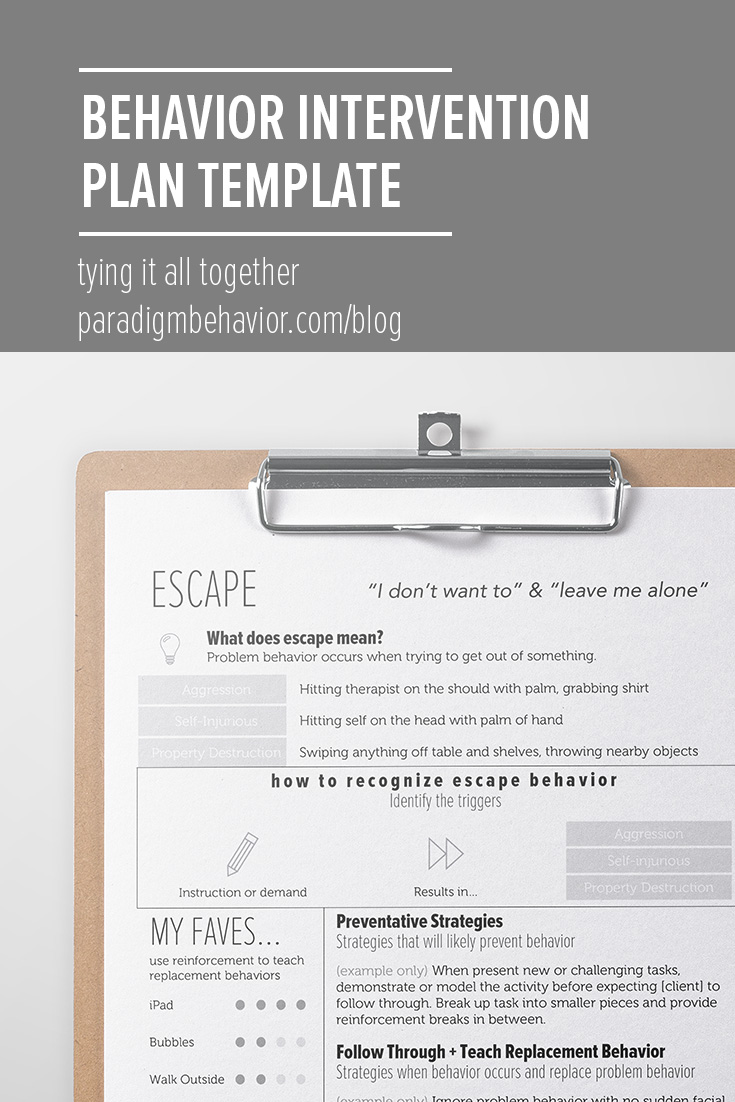So far, each of my blog posts has had little tidbits here and there about behavior management, especially when it comes to key phrases you hear in ABA therapy:
- If your child has a tantrum, you should ignore and redirect.
- When you redirect make sure you follow through with the behavior plan.
- The behavior plan is based off of functions of behavior.
- When you first follow through, the behavior will get worse before it gets better.
- Each time your child has a tantrum, be sure you are consistent and make it part of your routine
- Use direct, positive statements like “hands together” instead of “don’t touch that.”
It’s quite a bit to take in, especially when you’re in a middle of a tantrum, but it’s all part of the plan. In ABA therapy, your child should have a behavior plan with details to the above statements. The main components to a behavior plan are:
Function of behavior:
Attention, Escape, Tangible or Automatic or a combination (unfortunately, it’s common to see one behavior have more than one function!)
Behavior(s):
List of behaviors that fall under the function of behavior. This is important so that when you see the behavior (e.g. tantrum) and what triggered it, you will be equipped to follow through with the behavior plan.
Behavior(s) defined:
What does a “tantrum” look like? Is it crying and flopping on the floor while stomping on the ground? Maybe it’s screaming while swiping everything off the table and shelves.
This is key to an effective intervention. Determining function of behavior can be done through different assessments called a functional behavior assessment (FBA), which is typically conducted by a board certified behavior analyst (BCBA). Some teachers are trained to conduct an FBA as well.
Antecedents:
This is technical term for “what is happening right before the behavior?” In other words, you’re determining what triggered the behavior. For example, if you told your child to “close the door” and the next thing you know your child is crying and flopping on the floor, the antecedent would be telling them to close the door.
Strategies to prevent behavior:
These are interventions or strategies that align with functions of behavior to prevent problem behavior from occurring frequently. These can include activity schedules and frequent breaks.
Strategies when the behavior occurs:
This is when problem behavior has touched down and you need to brace yourself, take a deep breath, and remember the strategies to follow through. Here’s an example for escape:
no facial expression, do a series of simple tasks such as imitation (clap hands), identification (what’s this?, where’s your nose?), then redirect to original instruction to “close the door.” This is likely where you’ll see extinction bursts, which I went over in the blog post “It gets worse before it gets better.”
Replacement behavior:
Since your child is most likely communicating through problem behavior, the intervention will teach your child to communicate (based on function) to replace the problem behavior, essentially requesting what they want (mand training!).
Through a behavior plan, you can tie all the little tidbits together. You’ll be able to recognize what triggers the behavior, as well as what to do and what to say when it occurs. As a behavior analyst, I try to make sure that parents understand and feel comfortable following through with protocol, but I also understand that there can be confusion at times. If you need clarification, be direct and ask! It’s important for you to keep an open line of communication with your therapist to ensure the plan is being followed as closely as possible.
I’ve recently put together a behavior plan for therapists so we can all follow the same protocols for consistency. However, it’s chock-full of jargon and not easy to read, which is not what Paradigm Behavior is all about. If I want everyone involved, I need to be sure everyone can understand it. With that in mind, I created a modified version of the behavior plan, which can be downloaded in our store. (I also like to make things pretty, in case you couldn’t tell.)
[For Professionals]
As mentioned in the blog post, this Behavior Intervention Plan (BIP) template is created to make behavior plans user friendly by using everday language and creating a fun layout. Formally, a behavior plans ranges from 5-15 pages and are extremely thorough. However, use this 1-page template as a simplified version designed to be used in the moment with the child for parent, therapist, paraprofessionals and anyone who works closely with the child. They are made to look friendly and easy to read.
This document is available on Microsoft Word and Powerpoint. Included are 4 templates based on a video tutorial that can be seen here.
BIP Template (docx) - 2 single pages, two designs
BIP Template (pptx) - two pages, two designs
BIP Instructions (pdf) - how to customize your documents
7 - Signature Paradigm Behavior Picture Icons (jpg)




